ASUS VivoBook S15 S510 Review: Premium style with a great mid-range price
A sleek and solid mid-range laptop from ASUS with premium looks.
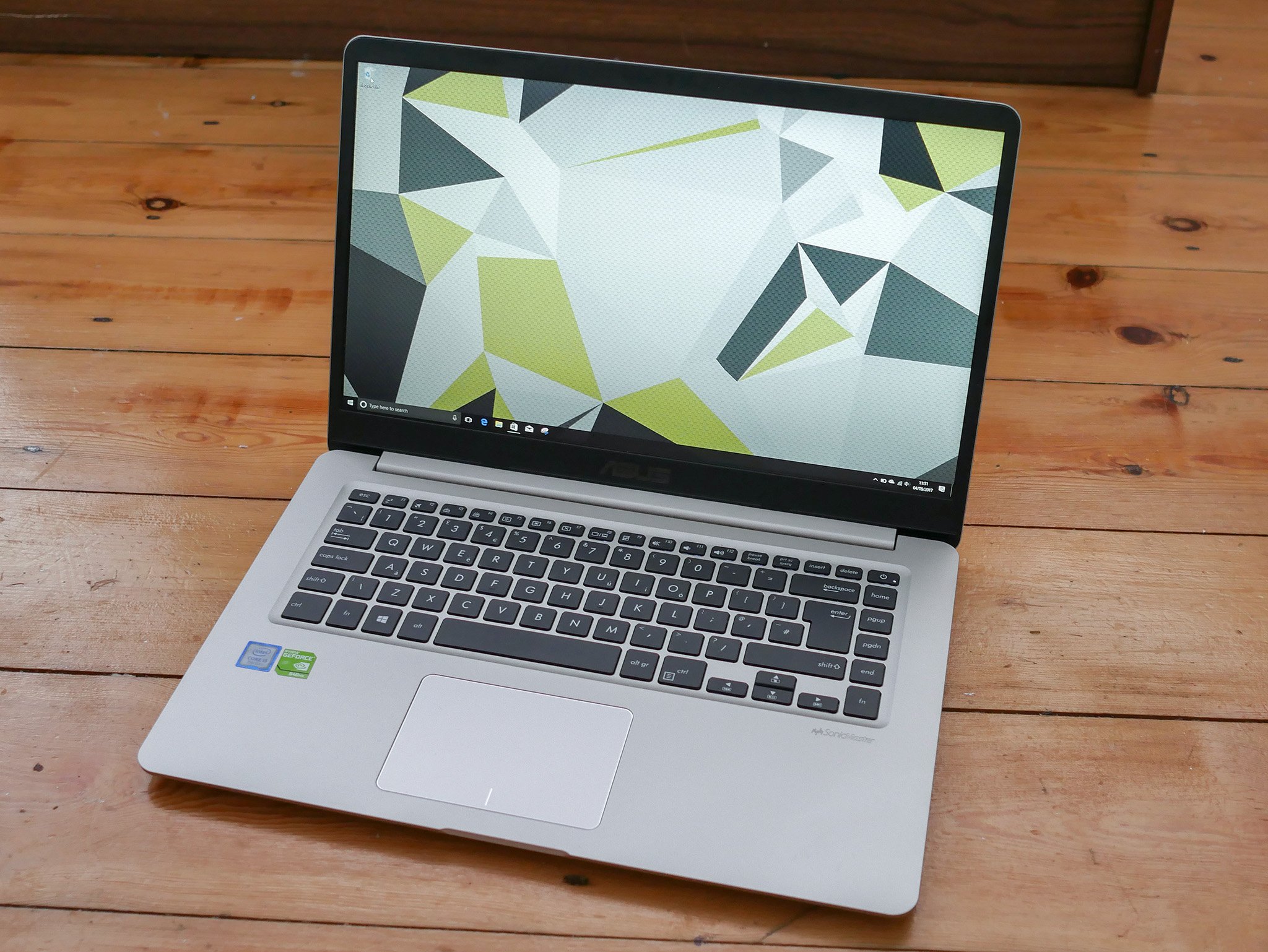
Getting a laptop that looks like the most expensive models but actually isn't that costly is a pretty big win. For ASUS, the Vivobook line is its mid-rangers, coming in just below the lineup topping Zenbook products.
In the case of the VivoBook S15, what you've got is a 15-inch laptop that's stunning to look at, well equipped and very well built for around $800. You even have a dedicated GPU thrown in. What's not to like?
That's what we're here to find out.
ASUS Vivobook S specs as tested
| Category | Component |
|---|---|
| Processor | Intel Core i5-7200U (2.9GHz)Dual-core |
| Storage | 256GB SSD |
| RAM | 8GB |
| Display | 15.6-inch FHD (1920 x 1080) IPS, matte178˚ wide-viewing |
| Graphics | Intel HD Graphics 620NVIDIA GeForce 940MX with 2GB GDDR5 VRAM |
| Ports | USB-A 3.1USB-A 2.0USB-C 3.1HDMI3.5 mm jackSD card reader |
| Speakers | ASUS SonicMaster |
| Wireless | Intel dual-band Wireless-AC 3165802.11ac (1 x 1)Bluetooth 4.1 |
| Camera | Front-facing VGA |
| Touchpad | Precision |
| Battery | 42Wh |
| Weight | 1.5kg (3.3lbs) |
| Dimensions | 361.4 x 243.5 x 17.9 mm |
| OS | Windows 10 Home |
| Price | Around $800 |
Options are available up to a Core i7 processor, 16GB of RAM, 512GB SSD and 2TB HDD as well as a fingerprint sensor on the trackpad for Windows Hello.
ASUS VivoBook S15 hardware and design
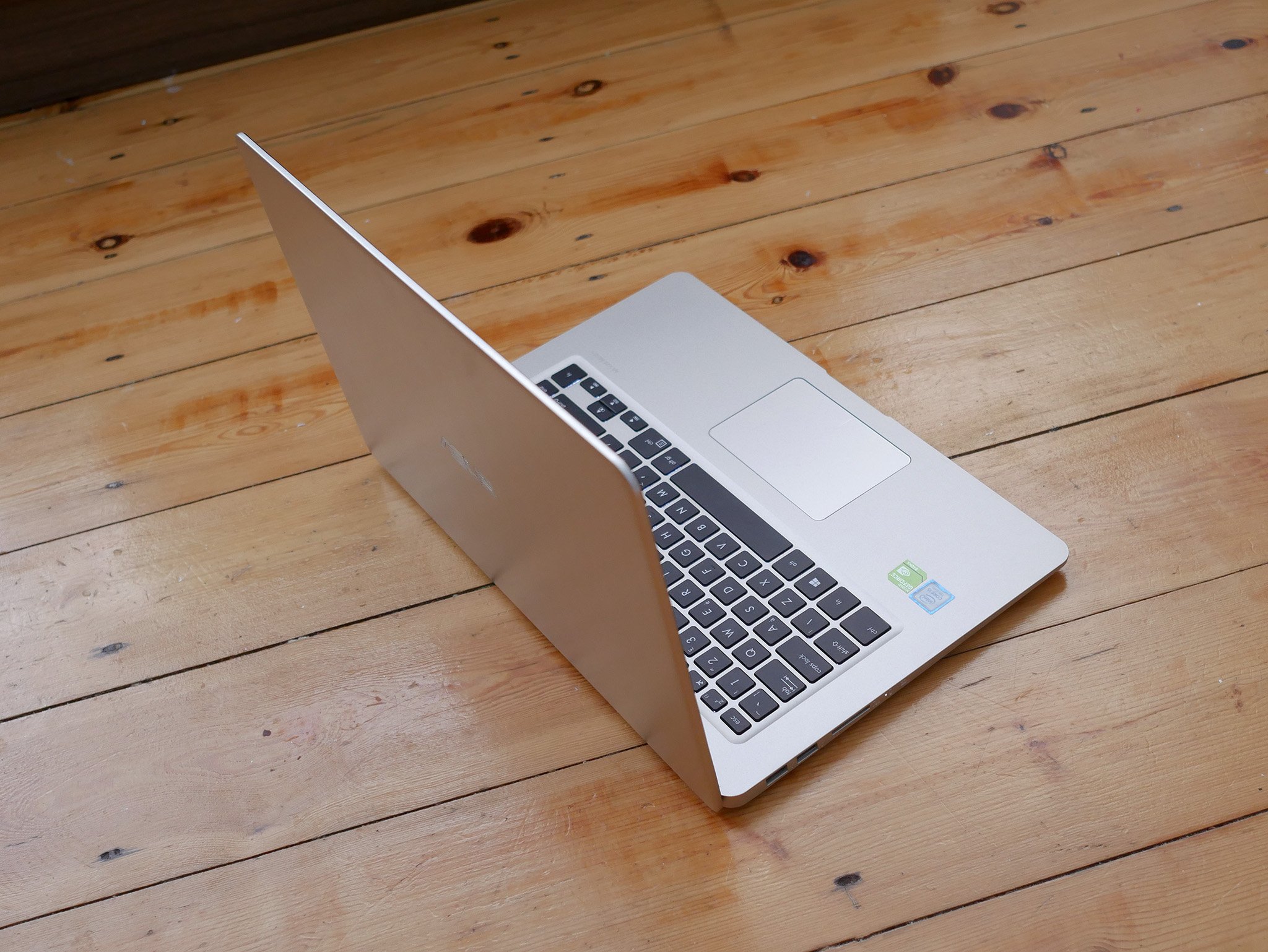
The VivoBook S15 looks all metal, but in truth, there's only a portion of metallic goodness on the lid. The rest of the chassis is plastic painted to look like metal, which for a mid-range laptop is perfectly reasonable. It's nicely done, and if it can trick you into thinking it is metal then it worked.
Despite being a 15-inch laptop, the S15 follows the traditional Ultrabook style, wedge design, tapering to its thinnest point where you'll rest your wrists. With the sleek body and mostly plastic construction, you also end up with an incredibly light laptop, coming in at just over 3lbs. That makes it extremely portable for a 15-inch notebook. It's sturdy, too, and while there's a little flex if you press down on the keyboard, it's not noticeable under normal typing conditions.
Get the Windows Central Newsletter
All the latest news, reviews, and guides for Windows and Xbox diehards.
The exterior is all one uniform color, the only break being the brushed finish on the lid. Adorning the sides are the multitude of ports, including a full sized SD card reader, HDMI and USB-C 3.1. No Thunderbolt 3, but we're happy to see the new standard included.
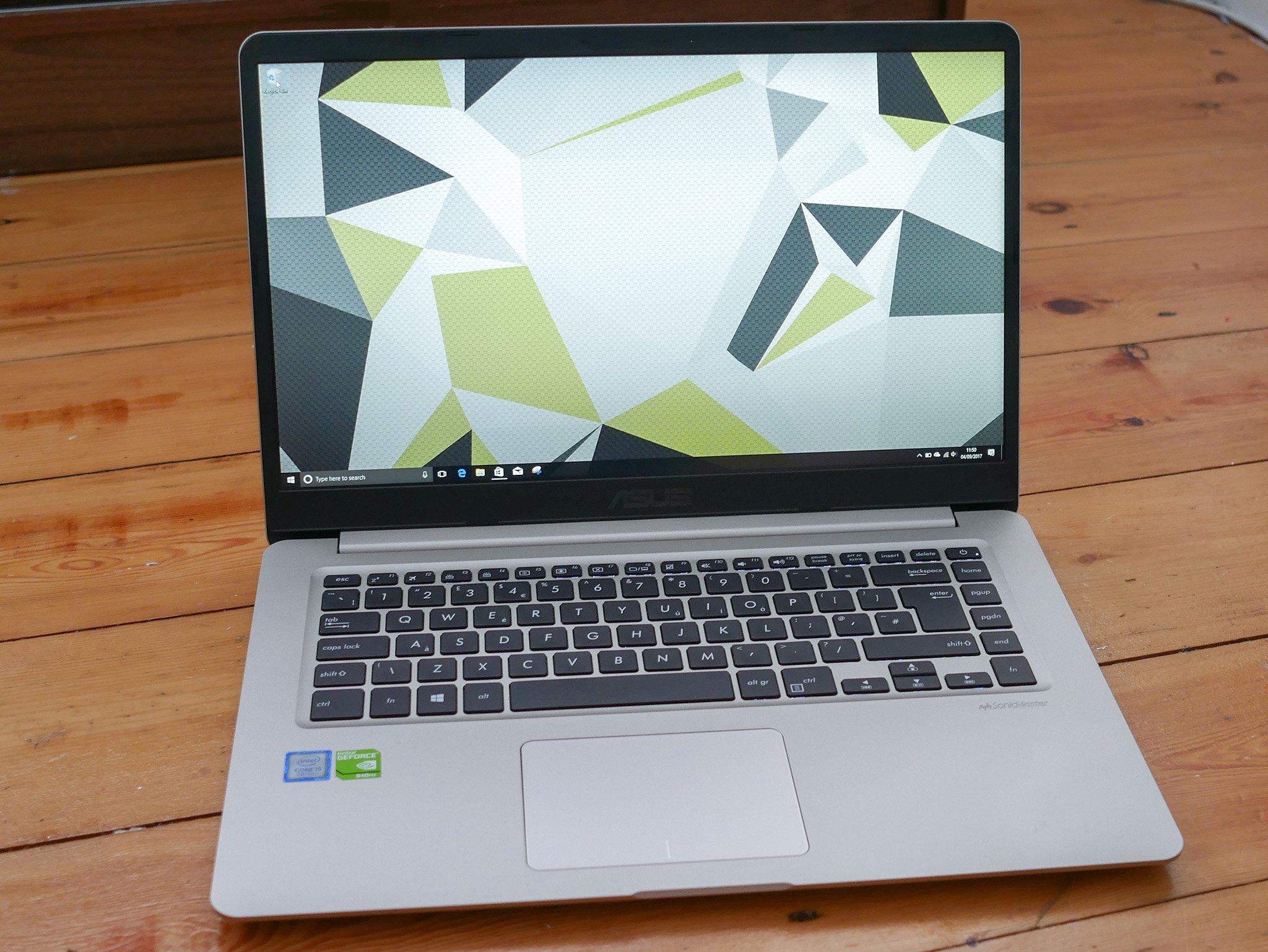
Upon opening the lid you're greeted with the 15.6-inch non-touch, matte finish, 1080p display. And super slim side bezels. I've criticised ASUS in the past for being too bezel heavy on some of their laptops, adding additional footprint where you probably don't need it. The VivoBook S15 has an 80 percent screen-to-body ratio, leaving your eyes focused solely on what's important: The display.
The laptop hinge hides the ventilation grille, while the speakers are located towards the front. The VivoBook S15 has ASUS' SonicMaster technology, which in truth is more about under the hood improvements to make audio sound better. The speakers themselves are pretty loud, and decent sounding for laptop speakers, but aside from watching a movie or something when you're on the go you'll probably just use headphones.
The VivoBook S15 also has a solitary front facing camera, as you'd expect. And it's awful. At VGA resolution, even if all you're doing is the occasional Skype call, it looks terrible. If good looking video calls are important to you, invest in a dedicated webcam.
ASUS VivoBook S15 display

The display is non-touch, which for some isn't very exciting and possibly a deal breaker. But it's also not a convertible, so, does it really lose anything not having one? I'd say not.
What it is, is a nice enough looking matte display. I have one main criticism, and that's the brightness isn't particularly amazing. Using this in my front room on a sunny day, the screen was a little washed out on maximum brightness, which is disappointing.
It's extra disappointing because when you can see it properly, it's an excellent looking display. ASUS has also bundled its Splendid Technology with the VivoBook S15, with easy to use controls to tweak the color balance. ASUS has its own eye care mode built in, along with a vivid mode which gives everything a bit more saturation, and a manual configuration to set the color temperature to your own desired level.
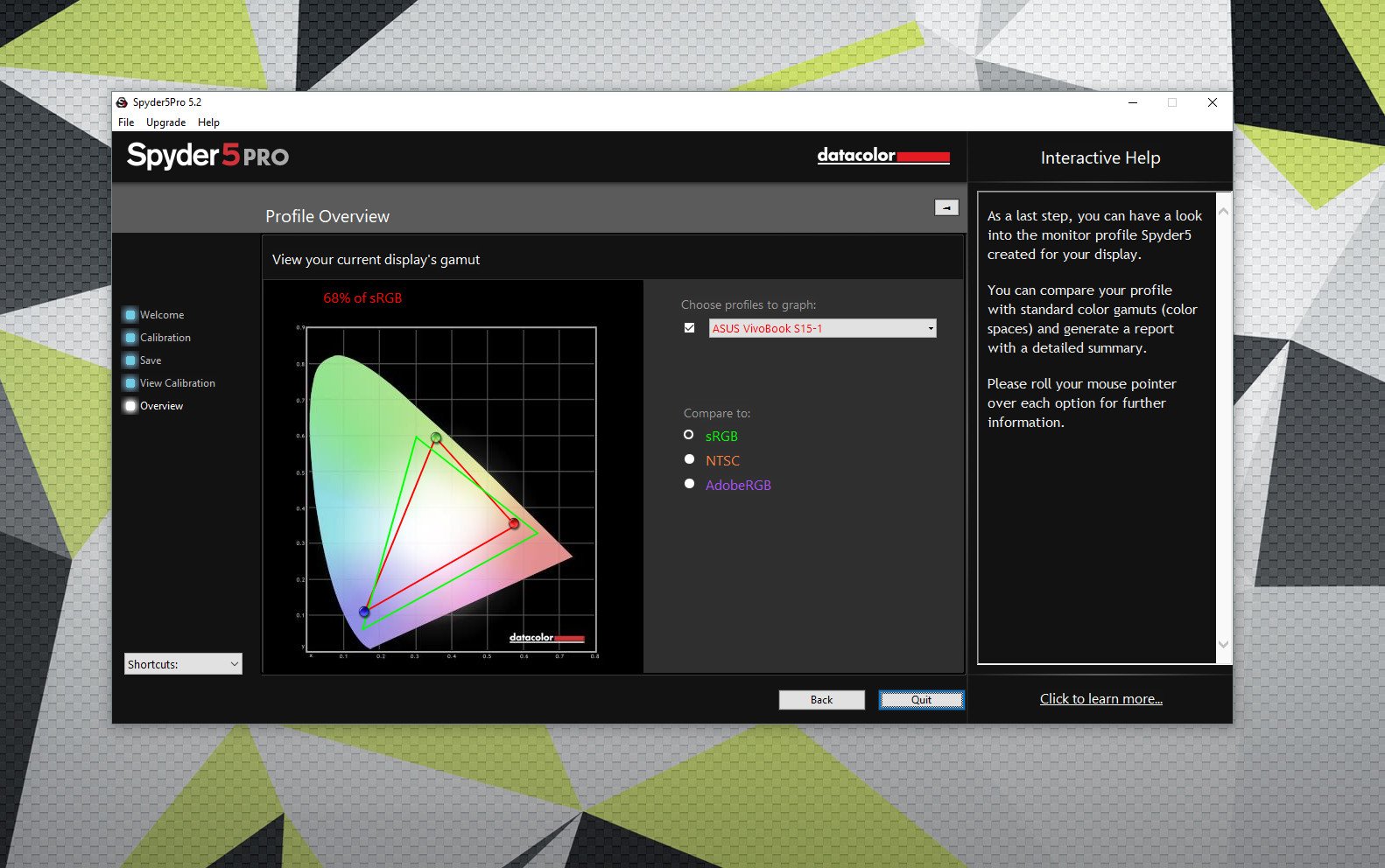
The best results still come from actually calibrating the display properly, and I can't recommend this enough. Run through the Spyder 5 Pro calibration software it's clear that out of the box it's pretty rough. Without calibration images look very flat, lacking in saturation and any real color temperature.
The display itself certainly isn't going to win any awards, coming in only 68% of sRGB. It still looks good to the eye, especially after calibrating, but if you're a creative depending on accurate color work it's really not for you. Equally, this isn't a high-end laptop, so there's certainly a trade off here.
ASUS VivoBook S15 keyboard and trackpad
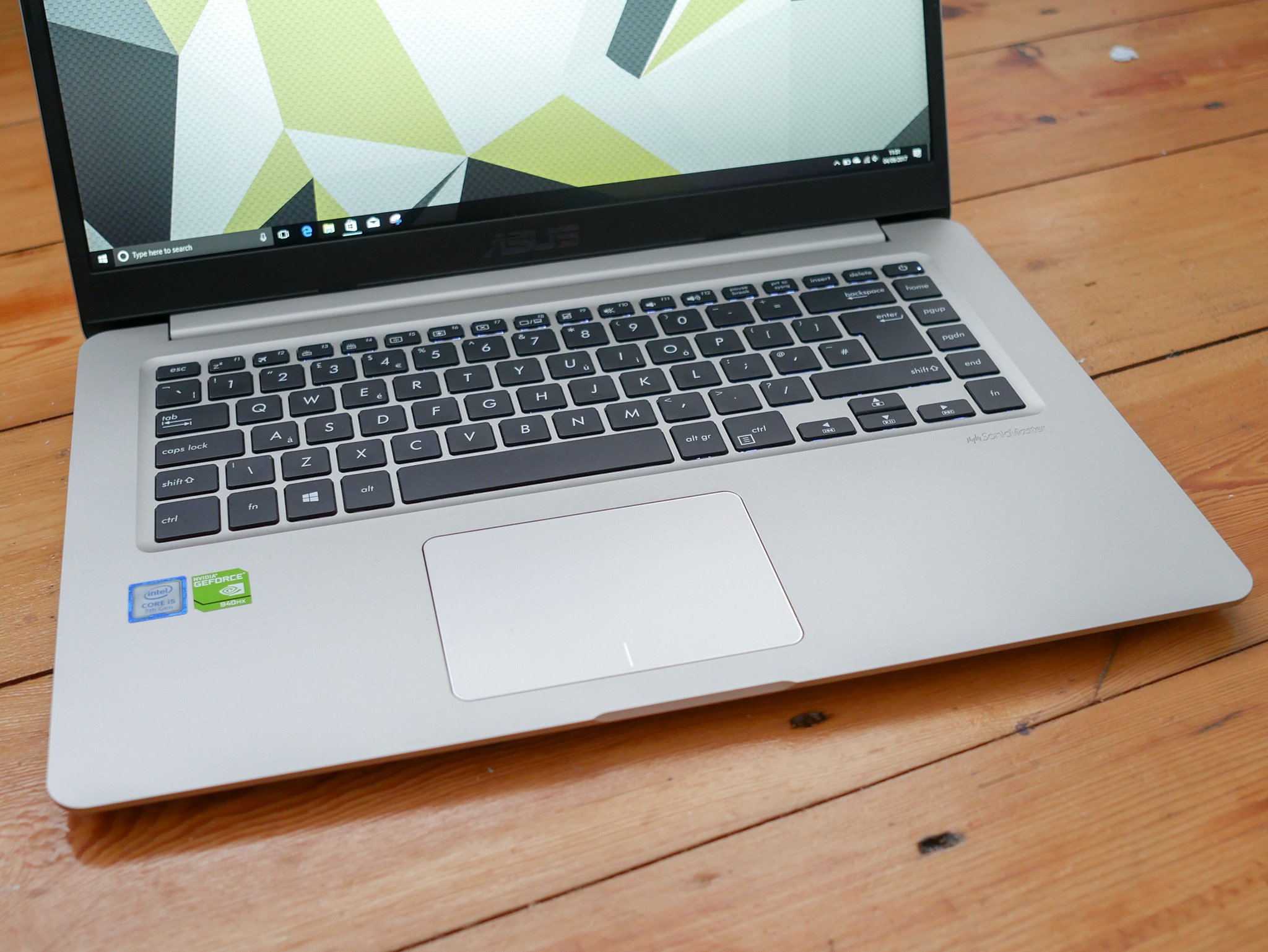
One consistency across ASUS laptops is that it has a great keyboard, and that's true here. It's got a 1.6mm key travel distance which I think is about perfect for this kind of laptop, and the full sized layout doesn't miss anything out.
Looking a bit lower at the touchpad, and the first point to note is that it has that all important precision touchpad. It's responsive and the finish on the touchpad itself is perfect. Smooth and with no resistance, even with slightly clammy fingers.
What is worth noting is that the sensitivity out of the box was up way to high for my liking. The cursor was darting around all over the screen, but knocking that down a little in settings soon remedied it.
On higher spec models of the VivoBook S15 the trackpad is also where you'll find the Windows Hello compatible fingerprint scanner. The review model we have doesn't have this, but it appears to be the same as the one on the Zenbook 3. Just a little square in the top right corner, with single touch operation.
ASUS VivoBook S15 performance
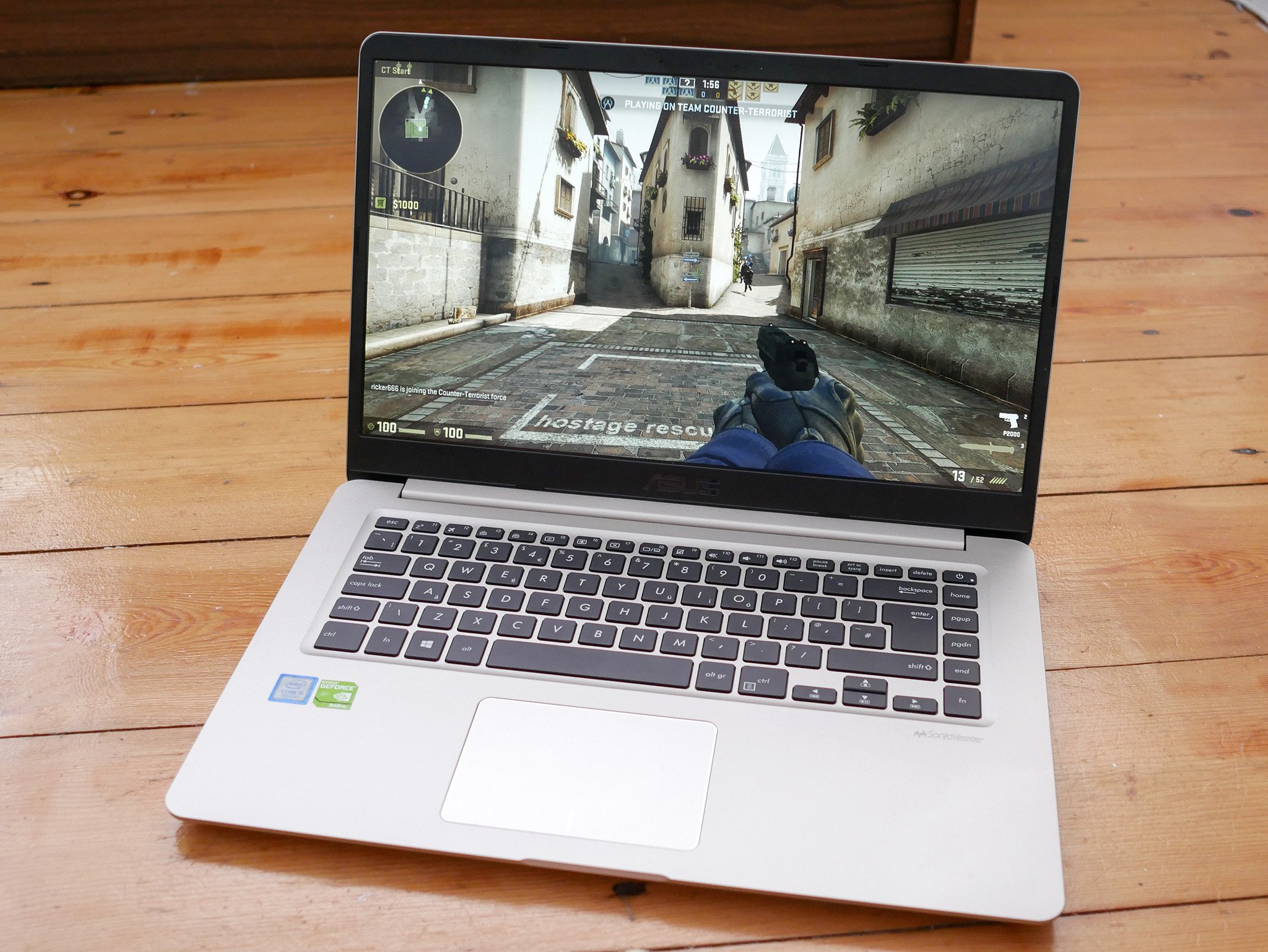
Inside the S15 you have a capable Core i5-7200 processor from Intel with HD 620 graphics. You also have a dedicated 2GB GeForce 940MX GPU from NVIDIA. A gaming laptop, this is not, but we'll rarely turn our noses up at dedicated graphics.
The flipside to that is that battery life takes a hit if you're using it, especially since the older 940MX isn't nearly as power thrifty as more current GPUs. The battery is also pretty small, considering what some of the competition include, and in reality I've seen about 6 hours of mixed use between charges during this review.
CPU
Geekbench 4.0 Benchmarks (Higher is better)
| Device | CPU | Single core | Multi core |
|---|---|---|---|
| ASUS VivoBook S15 | i5-7200U | 3,623 | 6,955 |
| Lenovo IdeaPad 320S | i5-7200U | 3,686 | 7,106 |
| Lenovo Yoga 720 15 | i7-7700HQ | 3,784 | 10,255 |
| Lenovo ThinkPad X1 Yoga (2nd Gen) | i5-7200U | 3,911 | 7,549 |
| Surface Laptop | i5-7200U | 3,725 | 7,523 |
| Lenovo ThinkPad T470 | i5-7300U vPro | 4,394 | 8,580 |
| Dell Latitude 5285 | i7-7600U | 4,635 | 9,289 |
| Lenovo ThinkPad X270 | i7-7600U | 4,512 | 8,566 |
| Lenovo ThinkPad T470s | i5-7300U vPro | 3,919 | 6,077 |
| Lenovo Yoga 720 13 | i5-7200U | 3,881 | 7,509 |
| Lenovo X1 Carbon | i5-7300U | 4,139 | 8,311 |
| HP EliteBook x360 G2 | i7-7600U | 4,496 | 8,435 |
| Samsung Notebook 9 15 Ext | i7-7500U | 4,316 | 8,320 |
| Dell Latitude 7280 | i7-7600U | 4,381 | 7,935 |
| Dell XPS 13 (9360) | i7-6560U | 4,120 | 7,829 |
| HP Spectre 13 | i7-7500U | 4,100 | 7,469 |
| Surface Book | i7-6600U | 3,948 | 7,415 |
No real surprises when comparing to other i5-7200U laptops. The VivoBook S15 is in the ball park of all them.
GPU
Geekbench 4.0 Graphics OpenCL (Higher is better)
| Device | Score |
|---|---|
| ASUS VivoBook S15 (940MX) | 30,636 |
| Lenovo IdeaPad 320S | 16,240 |
| Lenovo Yoga 720 15 | 13,727 |
| Lenovo ThinkPad X1 Yoga (2nd Gen) | 19,738 |
| Surface Pro 2017 | 30,678 |
| Surface Laptop | 19,256 |
| Lenovo ThinkPad T470 | 21,276 |
| Dell Latitude 5285 | 21,921 |
| Lenovo ThinkPad X270 | 17,376 |
| Lenovo ThinkPad T470s | 16,635 |
| Lenovo Yoga 720 13 | 18,185 |
| Lenovo X1 Carbon | 20,932 |
| Dell Latitude 5480 | 21,616 |
| Dell XPS 13 (9360) | 19,410 |
| Surface Book | 18,197 |
| Dell Latitude 7280 | 17,827 |
The different dedicated graphics makes over integrated Intel graphics is apparent when doing a Geekbench 4 compute test. The VivoBook outscores all the Ultrabook competition handily.
PCMark
PCMark Home Conventional 3.0
| Device | Score | Comparison |
|---|---|---|
| ASUS VivoBook S15 | 2,700 | Better than 46% of all results |
| Lenovo IdeaPad 320S | 2,576 | Better than 40 percent of all results |
| Lenovo Yoga 720 15 | 2,993 | Better than 57 percent of all results |
| Lenovo ThinkPad X1 Yoga (2nd Gen) | 2,773 | Better than 46 percent of all results |
| Surface Pro 2017 | 3,055 | Better than 57 percent of all results |
| Surface Laptop | 2,494 | Better than 40 percent of all results |
| Lenovo ThinkPad T470 | 3,103 | Better than 62 percent of all results |
| Dell Latitude 5285 | 3,079 | Better than 57 percent of all results |
| Lenovo ThinkPad X270 | 3,009 | Better than 57 percent of all results |
| Lenovo ThinkPad T470s | 2,576 | Better than 40 percent of all results |
| Lenovo Yoga 720 13 | 2,717 | Better than 46 percent of all results |
| Lenovo X1 Carbon Core i5 | 2,965 | Better than 57 percent of all results |
| Samsung Notebook 9 15 Ext | 2,998 | Better than 57 percent of all results |
| Dell XPS 15 (9560) | 3,534 | Better than 71 percent of all results |
| Dell Latitude 7280 | 2,829 | Better than 52 percent of all results |
| HP Spectre x360 15 | 2,472 | Better than 41 percent of all results |
The PCMark Home Conventional test measures how well a bunch of your hardware works together to perform a number of everyday tasks.
SSD
CrystalDiskMark (Higher is better)
| Device | Read | Write |
|---|---|---|
| ASUS VivoBook S15 | 519.9 MB/s | 154.3 MB/s |
| Lenovo IdeaPad 320S | 117.7 MB/s | 117.0 MB/s |
| Lenovo Yoga 720 15 | 1,839 MB/s | 1,238 MB/s |
| Lenovo ThinkPad X1 Yoga (2nd Gen) | 1,253 MB/s | 763.6 MB/s |
| Surface Laptop | 423 MB/s | 237 MB/s |
| Lenovo ThinkPad T470 | 1,079 MB/s | 716.1 MB/s |
| Dell Latitude 5285 | 1,300 MB/s | 1,113 MB/s |
| Lenovo ThinkPad X270 PCIe | 1,049 MB/s | 636.9 MB/s |
| Lenovo ThinkPad T470s | 1,557 MB/s | 1,333 MB/s |
| Lenovo Yoga 720 | 1,904 MB/s | 1,169 MB/s |
| Lenovo X1 Carbon | 1,518 MB/s | 1,188 MB/s |
| Samsung Notebook 9 15 Ext | 1,365 MB/s | 1,213 MB/s |
| Razer Blade Pro | 2,571 MB/s | 2,467 MB/s |
| Dell XPS 15 (9560) | 2,207 MB/s | 1,628 MB/s |
| Dell XPS 13 (9360) | 1,287 MB/s | 794 MB/s |
| HP Spectre x360 15 | 1,128 MB/s | 862 MB/s |
Our review unit comes with a solitary 256GB SSD and while it's no super-fast NVMe (instead, a SATA drive), it doesn't perform too badly in the benchmarks. Running it through CrystalDiskMark it comes up with a decent 519.9 MB/s read and 154.3 MB/s write. This is, after all, a mid-range laptop costing around $800, and it's not too shabby at all.
It compares favorably with the more expensive Surface Laptop, but only falls to much more expensive Ultrabooks.
I also put the VivoBook S15 through the PCMark Sky Diver test where it came out with a 6,614 result, better than 17% of all others. So nothing exciting.
Despite the fairly limited graphical capabilities, you can still play some games on the VivoBook S15. According to Microsoft, you'll even be able to have a decent go at Forza 7 when that comes out later this year. But less graphically intensive titles are certainly playable on it, including eSports favorites like League of Legends and CS:GO, along with Microsoft's own Age of Empires 2 HD and the forthcoming Age of Empires: Definitive Edition.
You can't play PlayerUnknown's Battlegrounds, sure, but you can still have some fun when you're done with serious laptop work.
ASUS VivoBook S15 software
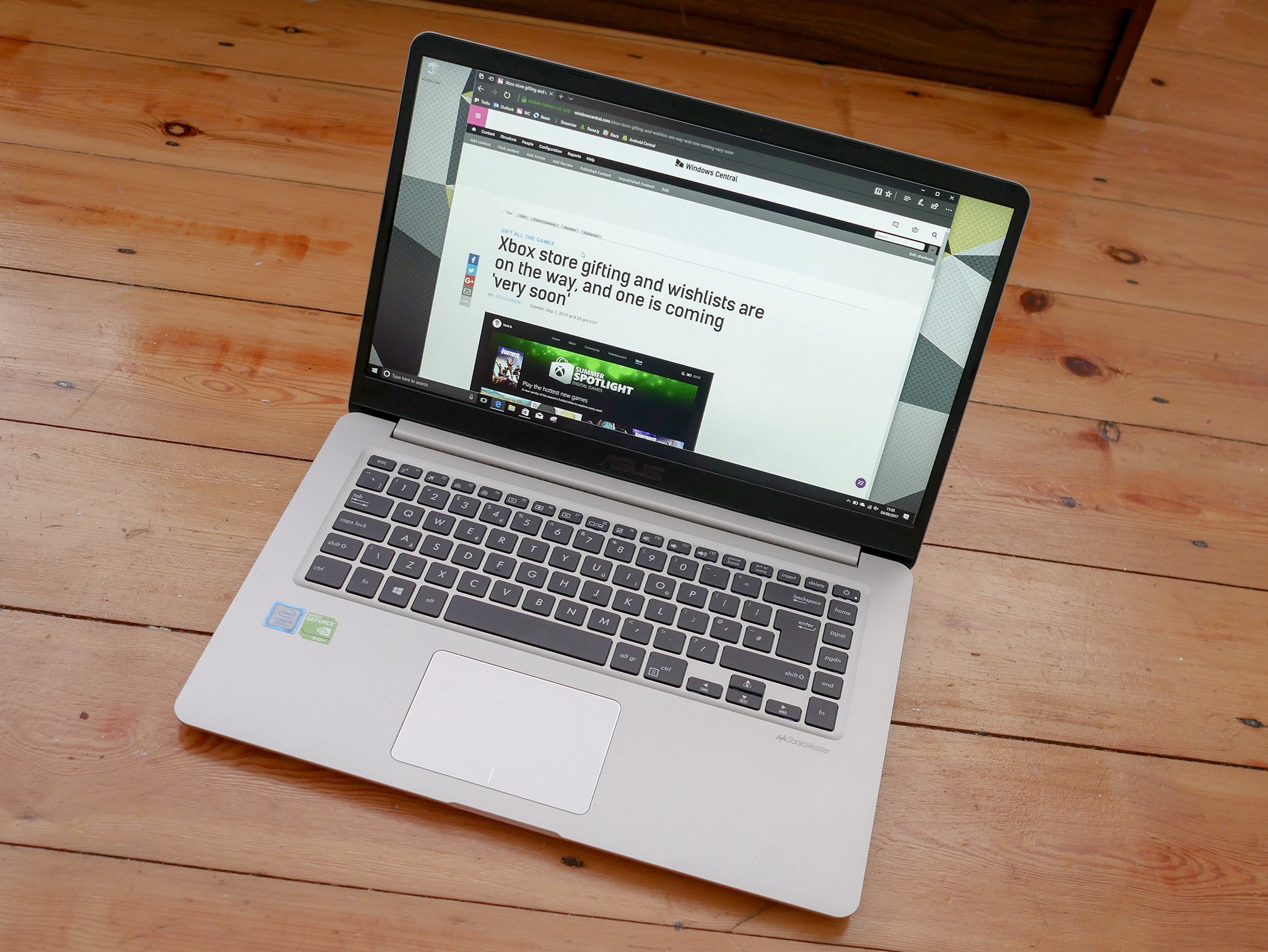
Depending which version of the S15 you get you'll either be using Windows 10 Home or Pro, in our case it's Home. That's not the story though, and it's, sadly, something we have to bring up every time an ASUS laptop comes across our desk.
There's too much bloatware.
The included ASUS software is fine, and very useful. The Splendid app for managing the display's colors and even the built in application to make flashing updated versions of the BIOS. Useful stuff is fine, especially things that will help less nerdy people keep on top of their BIOS updates.
But the Giftbox app is back, throwing itself in front of your eyeballs on first setup of the laptop, and you don't want anything that's inside it, really. You also don't want the built in McAfee software that keeps trying to convince you to register and use it.
Windows 10 has enough junk of its own included as stock these days (looking at you Candy Crush) without manufacturers making it worse. Some are better than others. Sadly, ASUS still puts too much on there.
ASUS VivoBook S15 - The bottom line
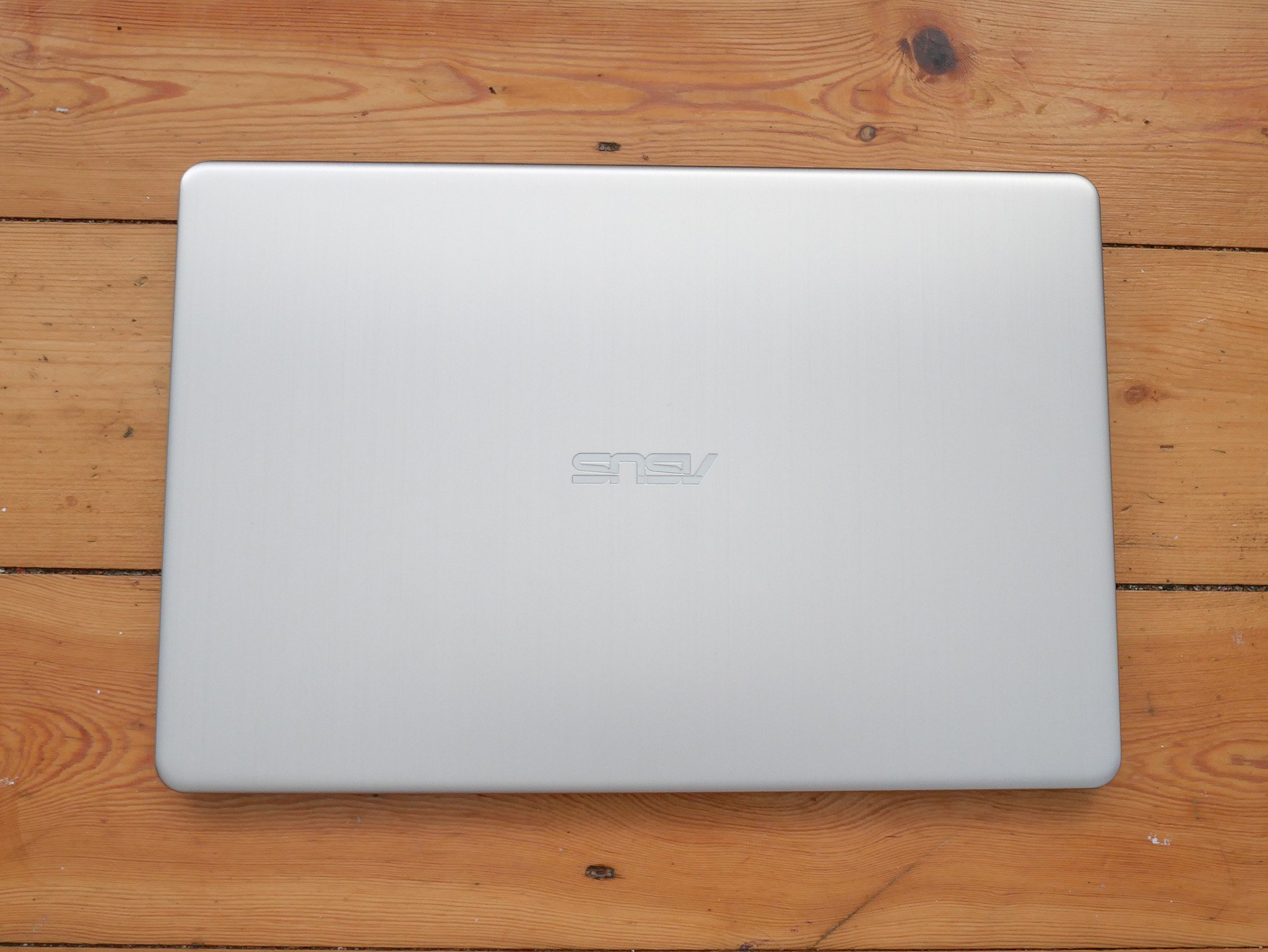
What ASUS has in the VivoBook S15 is something that should please many. The price is attractive, as is the laptop as a piece of hardware. It performs well, too, and if you're looking for dedicated graphics for a bit of a boost in your content creation, it's there to help you out.
There is certainly more good than bad. The display, for example, while not the brightest, looks great, and the keyboard and trackpad are both excellent.
It's a shame the battery life isn't longer and that ASUS stills loads up crapware you just don't want. Ever. But on the whole, the VivoBook S15 is a very good laptop.
Pros:
- Excellent design
- Dedicated GPU.
- Matte display.
- Good keyboard
- Precision trackpad
- Solid performance for $800.
Cons:
- Display could be brighter.
- Poor sRGB performance
- Bloatware.
- Battery life isn't fantastic.
- Awful webcam.

Richard Devine is a Managing Editor at Windows Central with over a decade of experience. A former Project Manager and long-term tech addict, he joined Mobile Nations in 2011 and has been found on Android Central and iMore as well as Windows Central. Currently, you'll find him steering the site's coverage of all manner of PC hardware and reviews. Find him on Mastodon at mstdn.social/@richdevine
